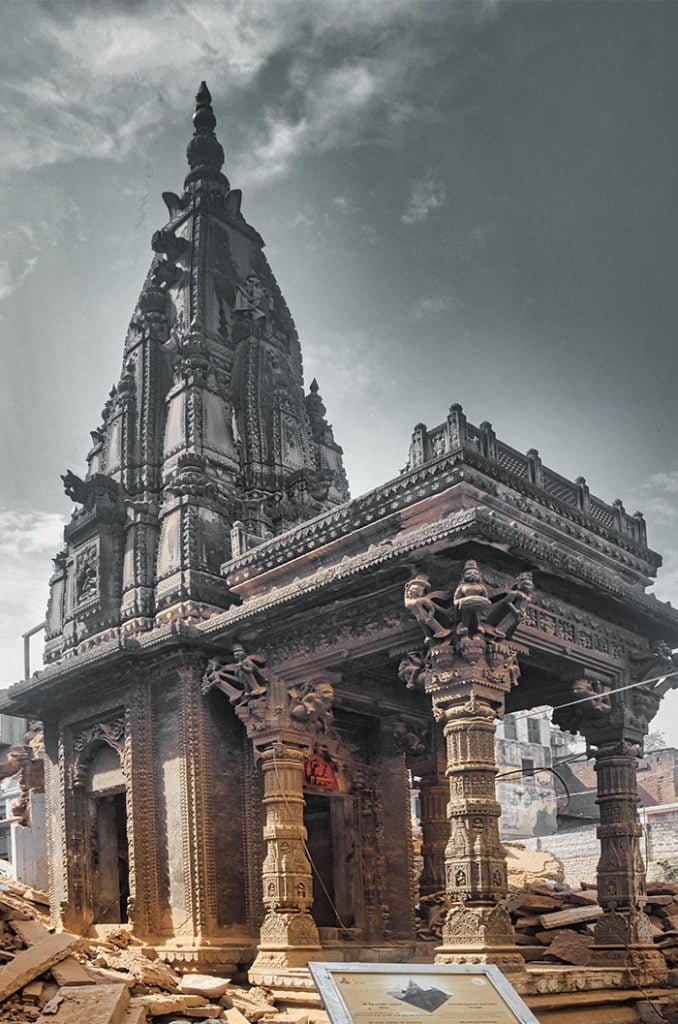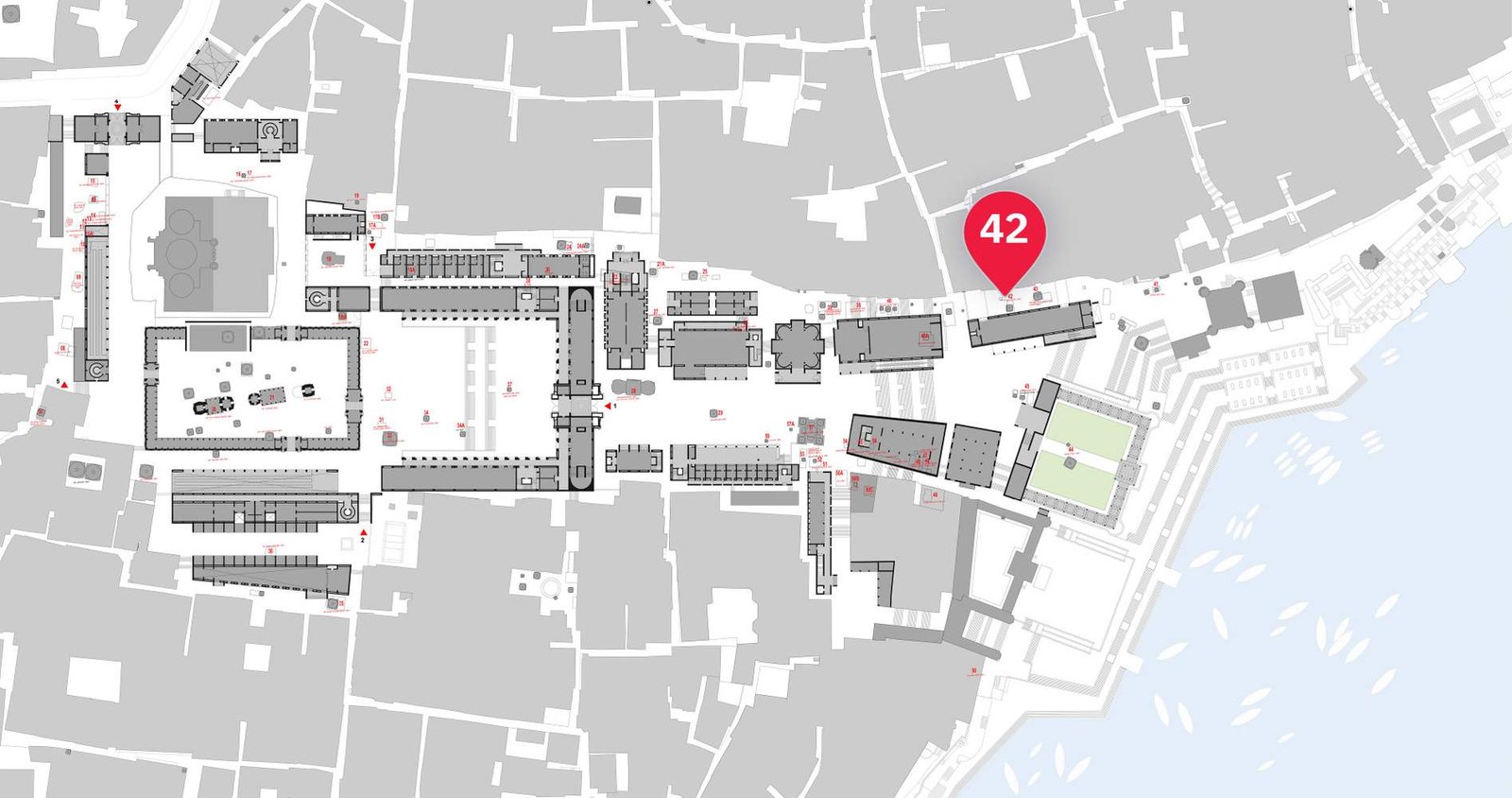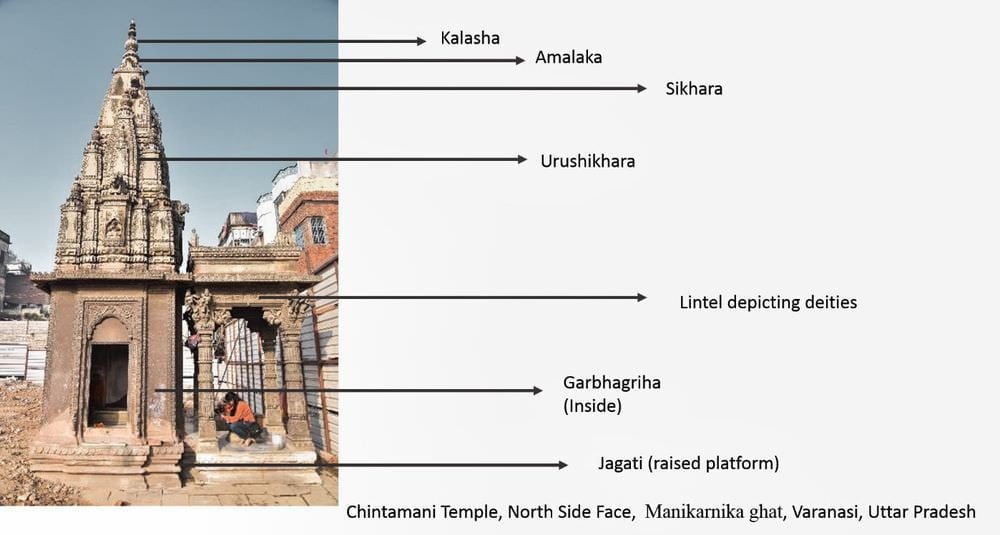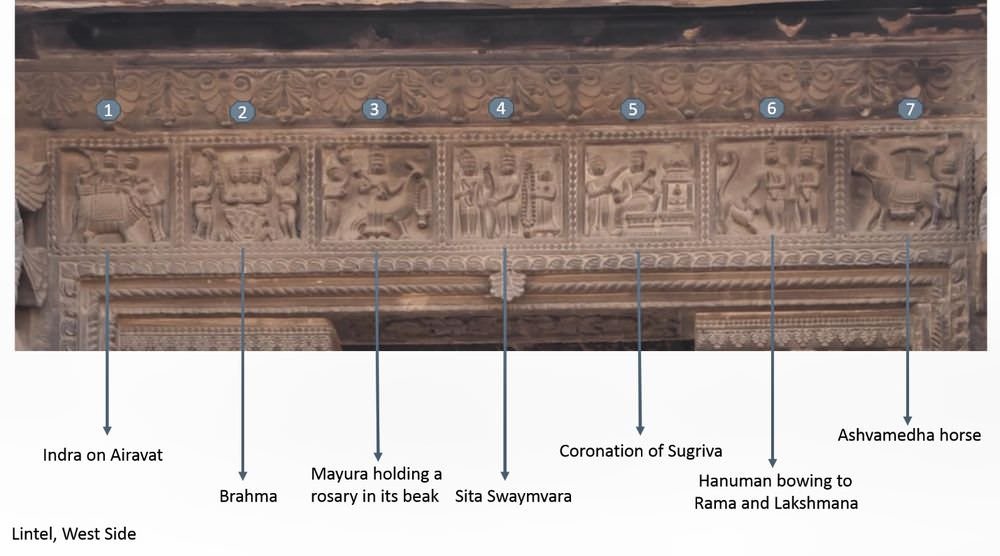The word Chintamani means ‘wish-fulfilling jewel’, regarded equally in both Brahmanical and Buddhist traditions. Chintamani is one of the many names of Ganesha who is also known as Chintaharan or the Remover of Worries. The north facing Chintamani temple is dedicated to Shiva. The names of shivalayas in Varanasi often end with the suffix ‘-ishwar’, such as Manokameshwar, Vishweshwar, and so on. The epithets are given on the occasion of consecration ceremony of the temple. Breaking away from the tradition however, is the name of this temple after Shiva’s older son, Ganesha, a parivara-devata omnipresent in temples dedicated to Shiva.
There are three Chintamani temples in Varanasi dedicated to Ganesha. One is located at Scindia Ghat, behind the gateway of Vashishthavamadeva temple, another in Jageshwar temple in Ishwargangi and the third near Kedar Ghat.
The temple is fashioned in typical Banaras style with a garbhagriha (sanctum) and mandapa (hall). During late 18th and early 19th centuries, similar type of temples with garbhagrihas and mandapas were erected along the ghats, in the vicinity of pakkamahal or the old city of Vishweshwar khanda and in the proximity of Panchakroshi parikrama. A number of such temples (consisting of garbhagriha and a flat-roofed mandapa) were also erected in early 20th century. Their typical red sandstone veneer makes it difficult to ascertain their actual date of construction. The recurring floral patterns carved on the walls and pillars, culled from textiles, Pratihara and Gahadavala motifs and putlis (celestial musicians and dancers) indicate an approximate date of construction within the last two hundred years. No inscription or date has been found in this temple.
Chintamani temple boasts of relief carvings on the gateway and inner surfaces of the mandapa. The carving appears to be inspired from the wood-carving and brocade-weaving traditions of the ancient city. The influence of miniature and wall paintings can also be discerned.
The grammar of medieval temple style of the region is followed in design and plan of the temple. The sanctum is preceded by a flat-roofed mandapa both of which rest on a low jagati (platform) which is provided with khura, kumbha and kalasa mouldings and a band of patravalli on the uppermost register.












